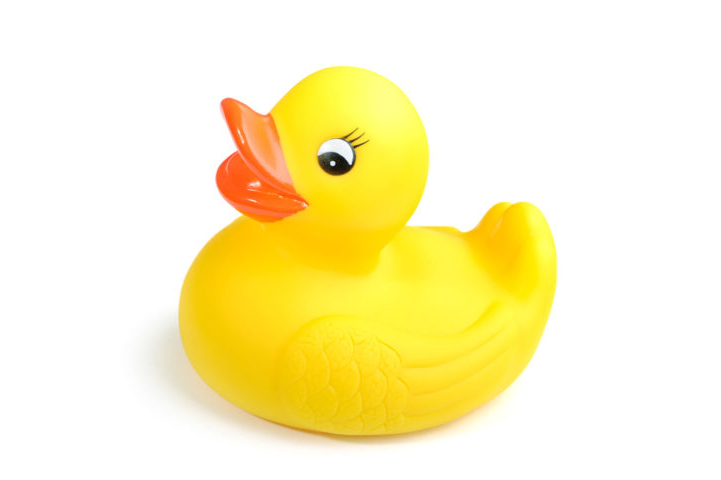Sink or Float
Objective:
Students will be able to state observations of how an object’s density relates to its ability to sink or float in water.
Fun Facts:
- Liquids vary in their density, too. Try mixing corn syrup, oil and water together. The corn syrup sinks to the bottom because it is dense.
- The shape of an object can also determine if it sinks or floats. A ball of clay sinks right away.
- Objects filled with air also float.
Materials:
You will need some sort of bucket, bin, sink, bathtub, etc., filled with water for the sink-or-float experiments.
| Pre-K | K-2 | 3-5 |
| Rubber Duck Lego Plastic Water Bottle Toy Car Action Figure/Barbie Penny | Plastic Spoon Metal Spoon Plastic Cup Pen/Pencil Rubber Band Paper Clip Penny Twig from a Tree | Plastic Spoon Metal Spoon Plastic Cup Pen/Pencil Empty Aluminum Can Aluminum Nail Empty Water Bottle Empty Glass Jar |
- Ask questions such as what do items that sink have in common, what do items that float have in common, etc.
- Before the students experiment, they will need to make predictions as to whether they think the objects are going to sink or float.
- What does it mean when we say “Make a prediction?"
- To make an educated guess about what will happen.
- Students can use the “Sink or Float Handout” page to make their predictions. Show students each individual item and have them make a prediction by drawing a line from that item to either “sink” or “float” in the picture.
- Then place one item at a time into the tub of water to find out whether the item sinks or floats.
- When all items have been tested, refer to the results handout.
Follow-up (Ask the students):
- How many did you get right?
- Did some items sink that you thought would float? Why do you think so?
- Did some items float that you thought would sink? Why?
- Do you think that the shape of the object affects whether it will sink or float?
- What do all of the objects that float have in common?
- What do all of the objects that sink have in common?
- Does the size/material of an object affect its buoyancy? How?
- Do you think your results would be different if you used a liquid other than water? For example, apple juice. How could you test that?

Quick Links
Where are Activities Available?
We partner with over 600 educational organizations.
See our school locator